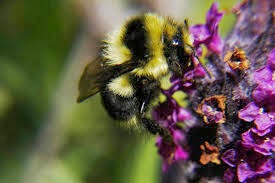 Beautiful creature!
Beautiful creature!Where dost thou go?
Away, away!
Amber whispers are after you!
- The use of insects typical of spring (we used a buttefly as inspiration, while Keats used a bee; however one may interpret we are talking about a bee when reading our poem)
- The use of rhethorical questions to show how the omniscient speaker is envolved and engage the reader (Keats uses them in his last stanza: "Where are the songs of Spring? Ay, where are they?"
- Synesthetic images typical of Keats: Our poem "Amber whispers" (colour/sight combined with sound) and in Keats' ode "Hedge-crickets sing; and now with treble soft/The red breast whistles from a garden-croft" (sound combined with touch and in the next stanza colur/vision combined with sound) SHOWS the way we experience the world, the unity of it all
 Mother says not to worry,
Mother says not to worry,Orange tears will resurface
As green fantasies
- Personification of Mother Nature (the use of the capital letter just like the speaker does with "Spring" in Keats' poem)
- The cycle of life: Spring will come again
- Use of colours to describe emotions; connection between people's essence and nature.

Golden floor let me through
Let Mother's children embrace you
- The allusion to the orange/golden colour; in "to Autumn" the speaker alludes to the sun in stanza one
- The personification of Mother, just like Keats personifies Spring
- Nature is a metaphor for life
- "Embrace" alludes to comfort, hope: although autumn is here, spring will come again and autumn "hast (...) music too". Enjoy the whole of the human experience, embrace life in its totality.
How does "To Autumn differ from the other poems you have studied?
- There is no wish to escape reality, it is grounded in the real world (no myths, no dreams)
- There is no narrative voice
- No feelings to other human beings, no romance. It's all about the interaction with the natural, Pastoral world, which makes it seem more pure.
How do I communicate a sense of warmth in my poem?
- Specific, vivid, concrete visual images
- Begins with autumn at the peak of fulfillment:
- Soft sounds in the beginning lines:
SEASON of mists and mellow fruitfulness, Close bosom-friend of the maturing sun; - Visual images portraying the warmth of the countryside
- Sibilances: "moss" "blossom" "conspiring" "swell"
- The actions expressed in Stanza Two: Autumn (personified as a harvester) watches a cider press; Autumn is listless and falls asleep
- "Keats blends living and dying, the pleasant and the unpleasant, because they are inextricably one; he accepts the reality of the mixed nature of the world." SOURCE: http://academic.brooklyn.cuny.edu/english/melani/cs6/autumn.html
How do I use language to reflect the passing of time and a sense of an ever-changing world in the poem?
- Constant sense of progress
- The circle of life is portrayed in nature: it is born and life is at its peak in Spring, "matures" (like the Sun) in Autumn, and softly dies ("soft-dying") just like the clouds
- Autumn has its charm just like Spring (the sun casts a "bloom" when setting): embrace the whole of the human experience
Rhythm
- The rhythm of the poem is generally iambic pentameter
- BUT there is a variation of rhythm at the start of every stanza
- Every stanza starts with a trocaic rhythm
- The acceleration of the change in rhythm accelerates the pace; it suggests an onwards motion
- Thus, it may be interpreted the change in rhythm is significant since it alludes to the constant change in the world, the never-ending circle of life















